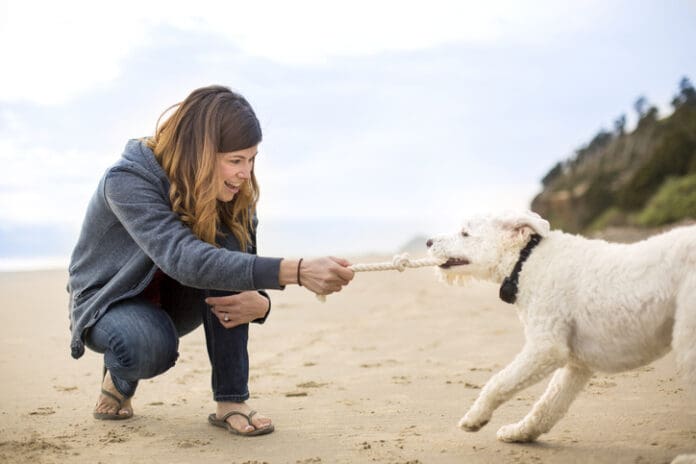Excerpt from Play With Your Dog by Pat Miller
Your best option for finding compatible playmates for your dog is to identify your dog’s play style and select dogs of similar size, energy level, and play style preference.
Size matters. No doubt there are dogs of significant size disparity who can play well together, but as a general rule, it’s wise to keep the difference in the realm of 25 pounds or less. A playful dog can easily injure a little dog, even without intent to do harm, simply by running over or jumping on the smaller dog. Of even greater concern is a phenomenon known as predatory drift in which something from a dog’s evolutionary past triggers the larger dog’s brain to perceive the smaller dog as a prey object – a bunny or squirrel – instead of the canine pal he’s played happily with for months or years. Often the trigger is the smaller dog running, yelping, or squealing. The bigger dog gives chase, and tragedy ensues.
To avoid this, good dog parks offer—and enforce—separate play areas for smaller dogs, and wise owners of small dogs don’t allow them to romp with canines who are considerably larger. Owners of big dogs sometimes mock owners of toy breeds for their “overprotectiveness,” but the risk is very real. There are plenty of examples of small dogs, especially tough small dogs (Jack Russells come to mind) who routinely hold their own with larger playmates, and lots of tiny dogs live long and happy lives with much larger dogs.
My own 8-pound Pomeranian shared his life unscathed with dogs in our family as much as ten times his size—although Dusty didn’t really play with his large siblings; it was more like a peaceful coexistence. If you’re actively lookingfor playmates for your dog, however, it’s safest to keep size cautions in mind, as well as play styles.
For more ideas and advice on the best ways to play with your dog and the benefits to both you and your dog, download Pat Miller’s ebook, Play With Your Dog from Whole Dog Journal.






